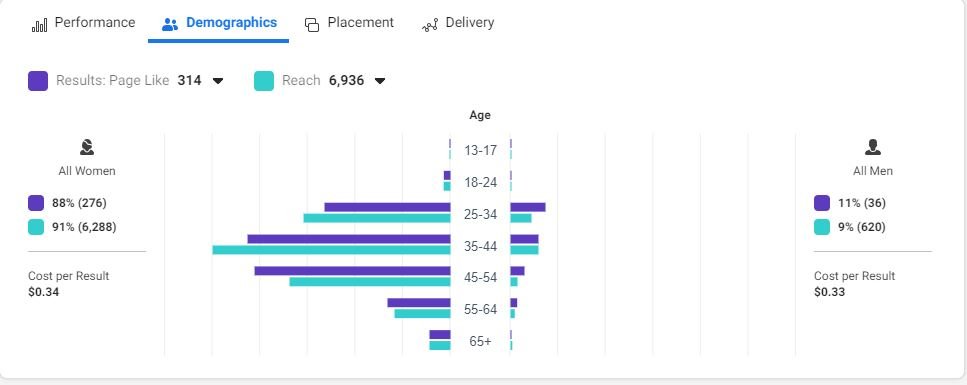How Social Media Marketing Impacts Brands?

Social media marketing is essential for brands to reach target audiences in this vibrant digital era. Since the last decade, it has risen tremendously. But while social media provides opportunities for entrepreneurs to communicate and extend their reach easily, it presents considerable problems for those who are not technologically equipped.
Entrepreneurs looking to build awareness and scale their brands should consider studying the ins and outs of social media marketing. Otherwise, they could lose touch with their ideal customers.
This article will explore social media marketing to help you understand how important it is for your brand’s marketing strategy.
Let us review!
What is Social Media Marketing?
Social media marketing enables interaction between your brand and consumers. It is associated with internal and external triggers. An external trigger is a notification. It is what gets the user to your offer, such as a call to action. An internal trigger refers to what is in the minds of consumers. It is the fear of missing out when you do not take action.
According to Investopedia, “Social media marketing (SMM) is the use of social media websites and social networks to market a company’s products and services. It provides companies with a way to reach new customers, engages with existing customers, and promote their desired culture, mission, or tone. Also known as “digital marketing” and “e-marketing.”
With a proliferation of social networks like Facebook, Instagram, LinkedIn, and Twitter, entrepreneurs need to plan and execute their brands’ social media strategies carefully.
So, build a community within your genre and create content that adds value to consumers. Sounds incredibly simple, right? But how do you implement your plan with success? You need to be able to connect those external and internal triggers. Let us look further!
How to Effectively Execute Social Media Marketing?
To develop an effective plan, consider the following:
Set SMART goals and objectives. These should be clearly stated, specific, measurable, achievable, relevant, and time-bound. Think about what you want to achieve, the message you want to share with your audience, and how you plan to achieve it.
For example, in 2018, I launched a Facebook community group test campaign for a brand. The Group engaged business professionals who want to simplify and organize their tasks to look good and be the most prepared when meeting with clients. The campaign’s goal was to raise awareness, and the objective was to attain 300 page-likes over a span of three weeks with a start and end date, that would ultimately raise awareness. Since the Group was newly created, with no followers, the daily budget was tested at $5 and $.60 per click. Next!
Create a situational analysis. This action is a fundamental part of your social media marketing. You will need to invest time in developing value-added content. Besides, it would help to analyze your audience as well. As you might know, the internet is riddled with noise. Do you see all sorts of ads and other content with no value, flashing across your screen daily? Now, when you take action and assess your audience, it will be easy to filter out that noise and establish yourself as an expert in your category. You can do that by delivering content of substance that your audience needs.
To achieve my goal and objective, I analyzed the audience in my category to determine their belonging needs. That empowered me to communicate with my audience and create empowering content that mirrored their needs. Next!
Identify your audience and create segments. Consumers are willing to communicate with you in this digital age. But you must know who you want to reach with your message. Defining your audience will help you to position your strategy effectively. For example, you can create market segments, such as demographics or behavioral, to target your audience more effectively. You could also group them according to their preferences or lifestyle.
My target audience was business professionals based on demographics: age and gender. Next!
Create promotional strategies to connect with your ideal audience. Your promotional strategy should aim to accomplish your goals and objectives. It should reassure your audience that your brand is the ideal one to meet their needs. Also, make sure you have an established budget.
Note that audiences’ viewpoints can vary depending on the platform you are using. So, choosing the right channel to communicate with your ideal customer, influence their thoughts, and convince them to get your offers is essential. It will help you put a successful promotional plan into action.
As you have discovered, Facebook was the medium I used for this campaign. Was it the best platform for my audience? Probably not! Also, only the mere inspirational content was disseminated to this audience to create an external trigger. Could it have been better? Continue reading!
Track and evaluate your results. Now it is time to check and measure your progress. Your analytics will allow you to see your campaign’s success. That will help you determine your return on investment.
The questions to ask are:
Did I achieve my goals and objectives?
Was my social media marketing effective?
How can I improve my metrics?
In analyzing the campaign, I did achieve my goal and objective. As you can see, I gained over 300 page-likes and an average cost per result of $0.34. The social media marketing strategy was effective.

However, the metrics could be improved for a better return on investment (ROI).
Two of several approaches for improvements are briefly highlighted below.
Approach 1 – To attract higher engagements of the male audience, the content could be assessed and tweaked to generate an emotion that would elicit an internal trigger for the male population to take action. Then an A/B test be implemented for different groups instead of just one segment. This method can provide insights into which Group is most profitable for future campaigns. Besides, it can be used to compare the responses against other platforms to determine which platform is most suited for the offer.
Approach 2 – Since the Community Group was newly created, the second approach that could be employed is to increase the daily ad spend budget from $5 to $10 or greater, and cost per click to $1, over a more extended period. Then monitor the ad to lower the daily budget and click cost. This approach could gain greater traction, increased page-likes, and a more profitable ROI. For future campaigns, I could also consider targeting only females or select my audience in the age group of 35-44 if needs be.
Conclusion
Social media marketing provides significant benefits when it comes to brand and customer engagement. As a brand, it helps you to meet customer demands; you can easily increase exposure, and boost sales.
Now, what’s next!
Social media marketing is a fantastic way to influence your audience. You can do so by the principle of persuasion: reciprocity, scarcity, authority, consistency, consensus, and liking, as briefly mentioned in the case. These principles guide behavior. More information will be provided on these principles in my future articles.
Also, you can gain a significant share of voice in the marketplace if done right.
“You can measure progress by looking at how your share of voice stacks up against the competition at various stages of the buyer journey.” -Jim Yu
So, are you ready to take your social media marketing to the next level?
Learn “How to beat the competition with share of voice” and influence your audience.
Please share your thoughts and comments!
